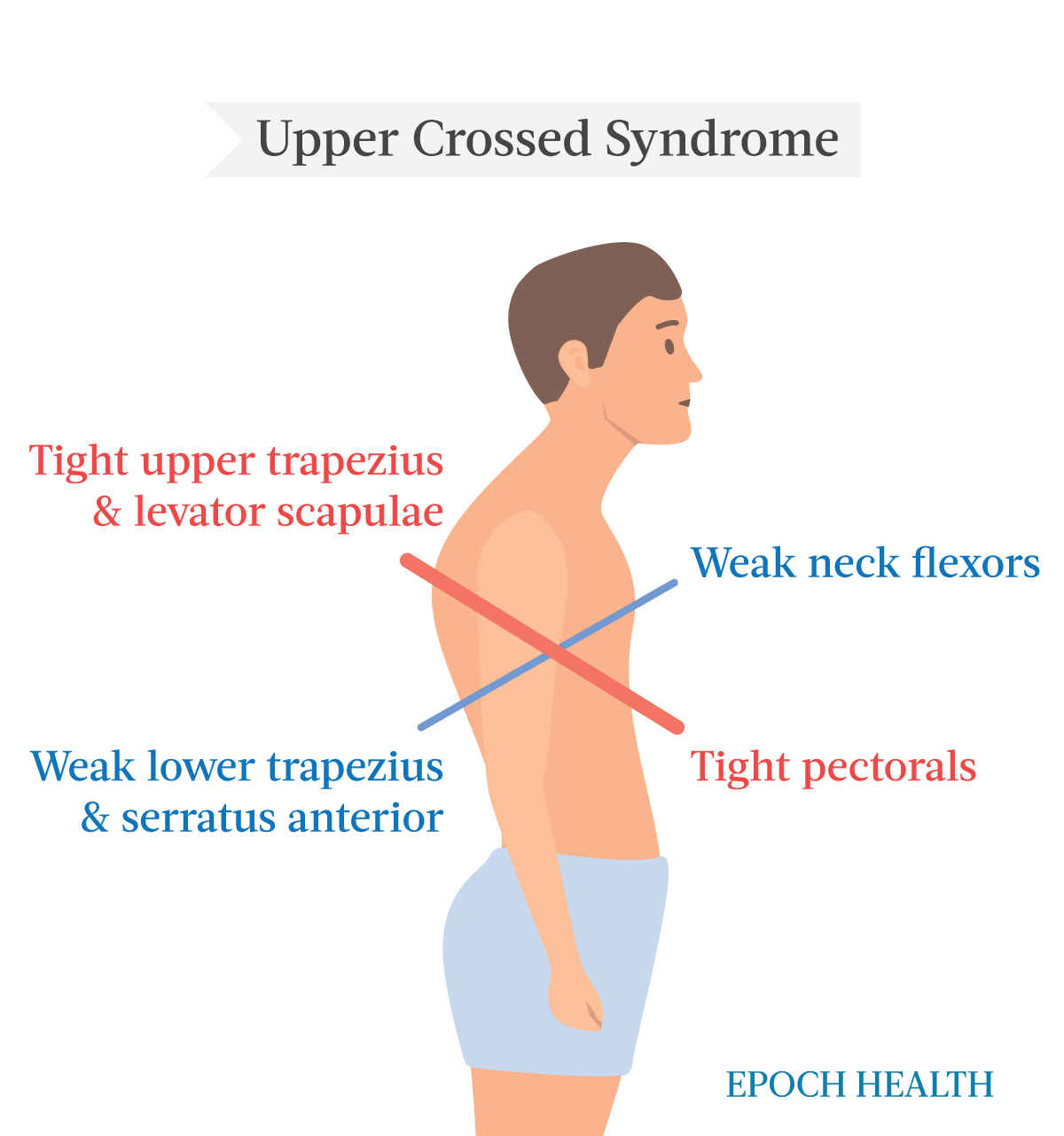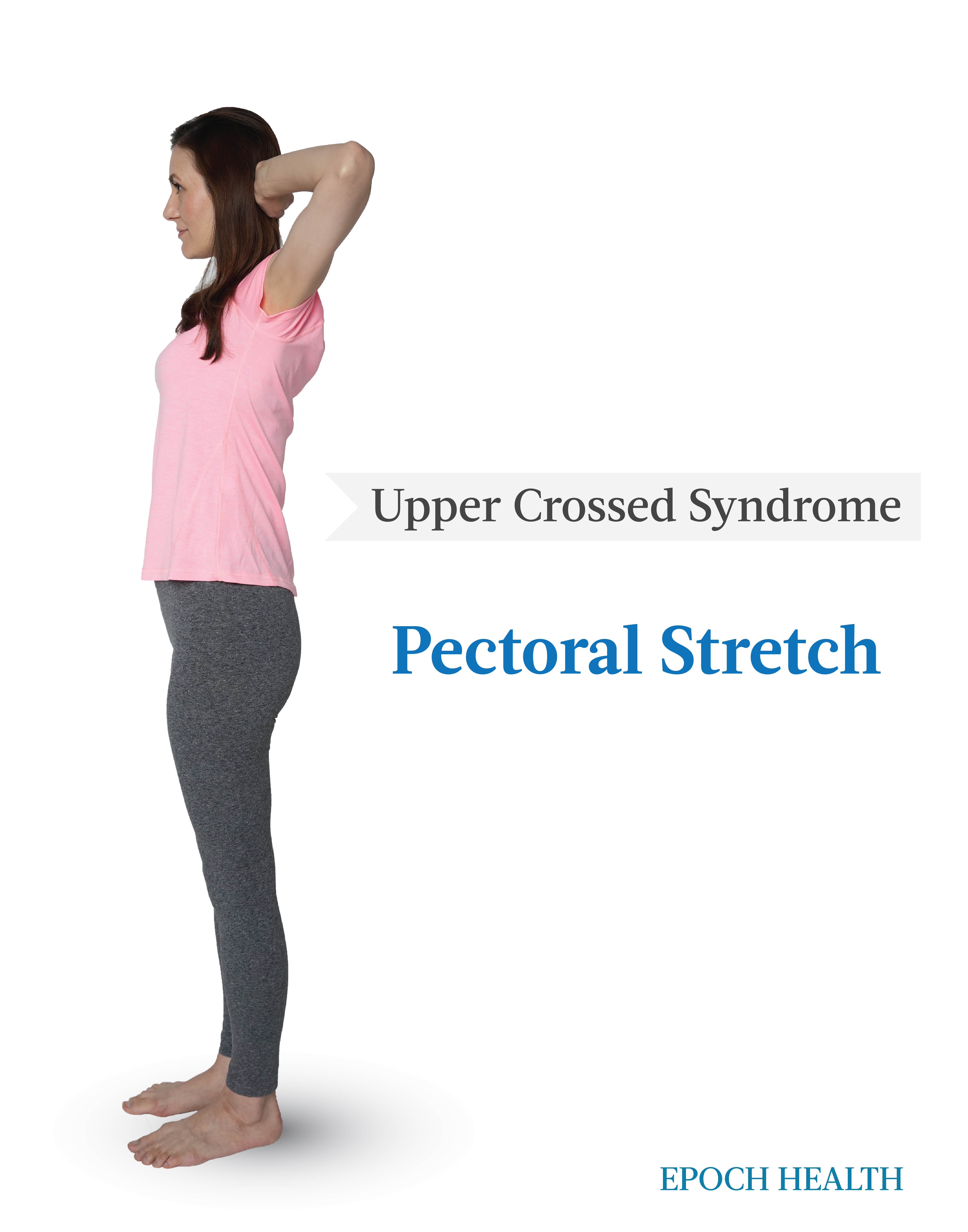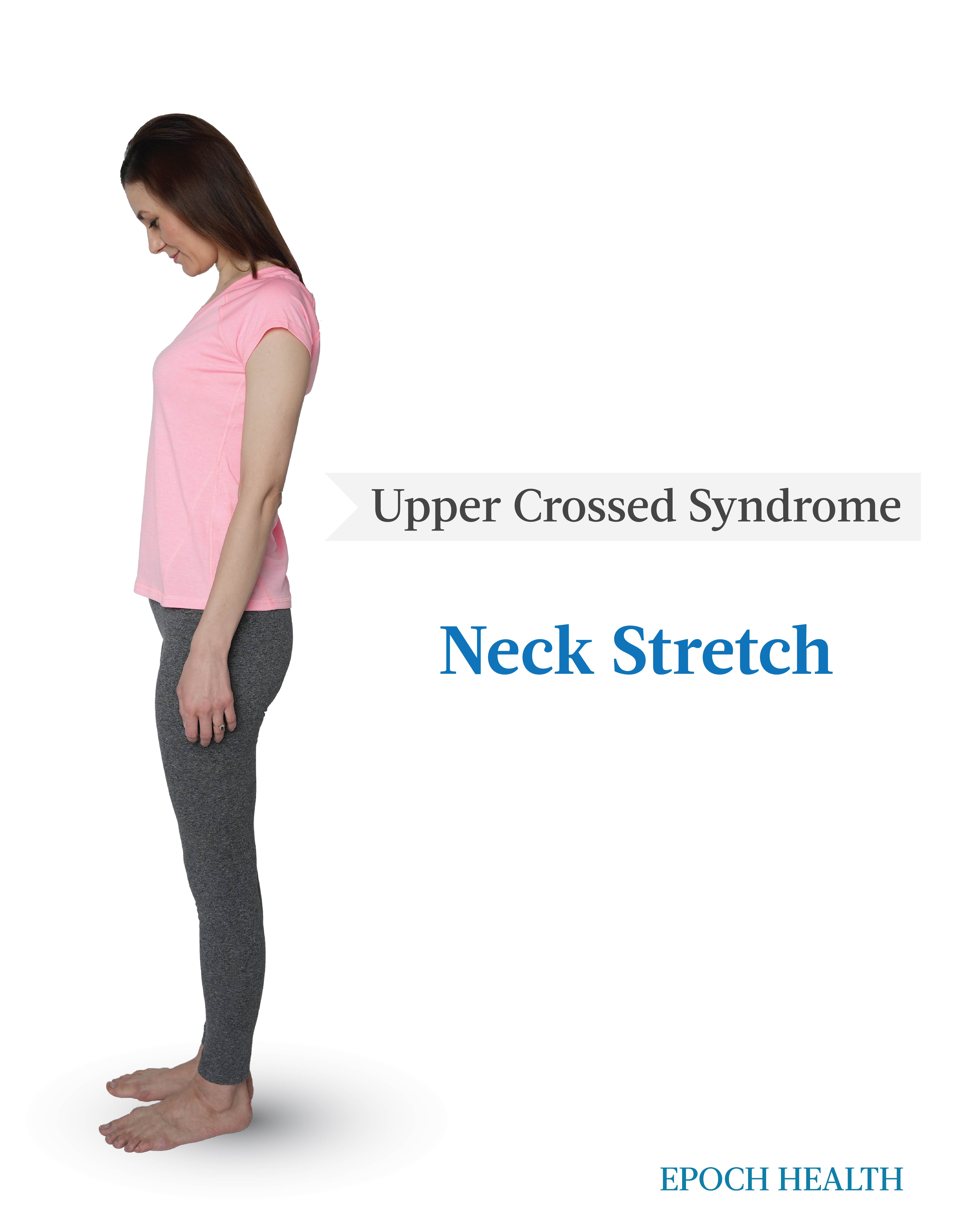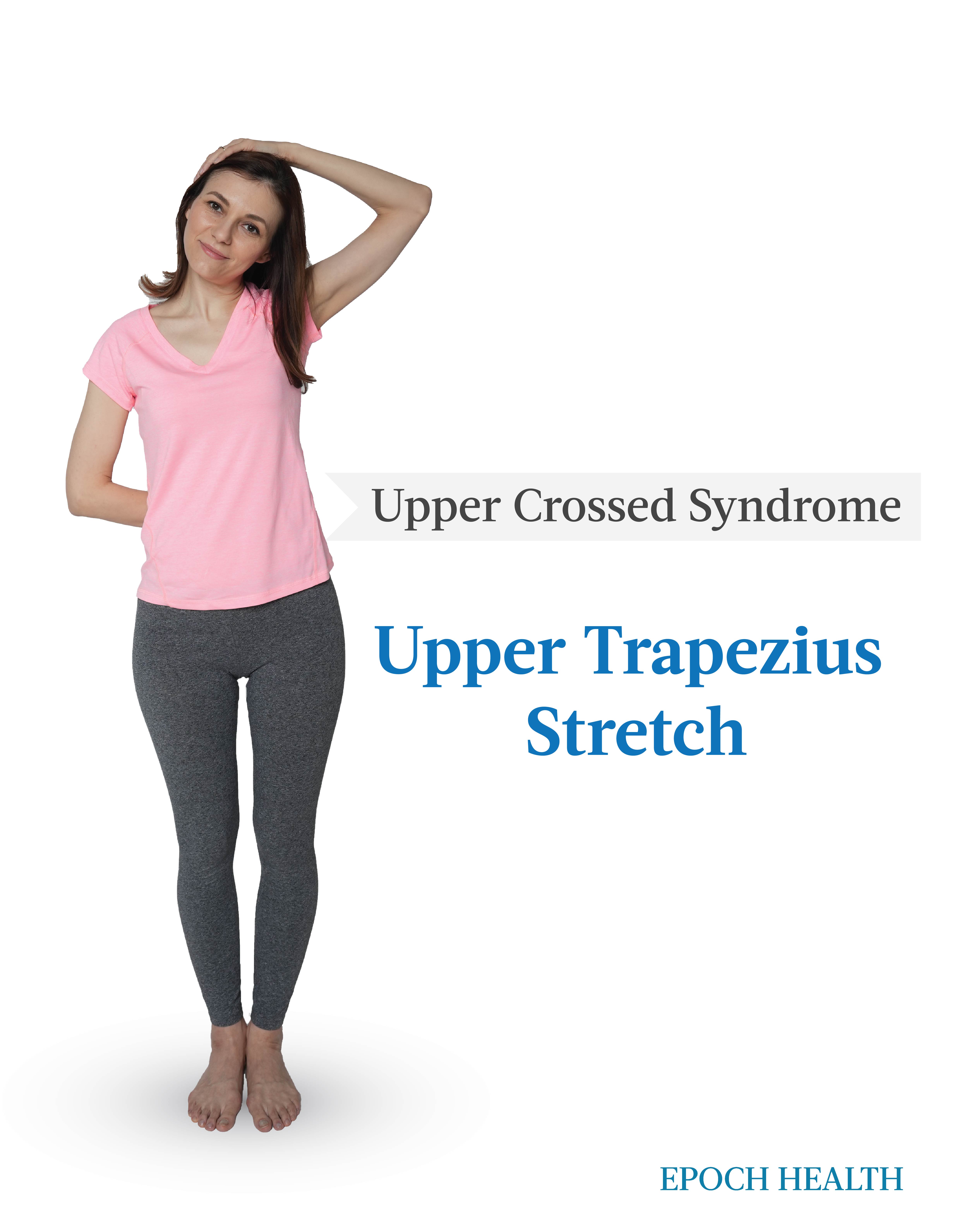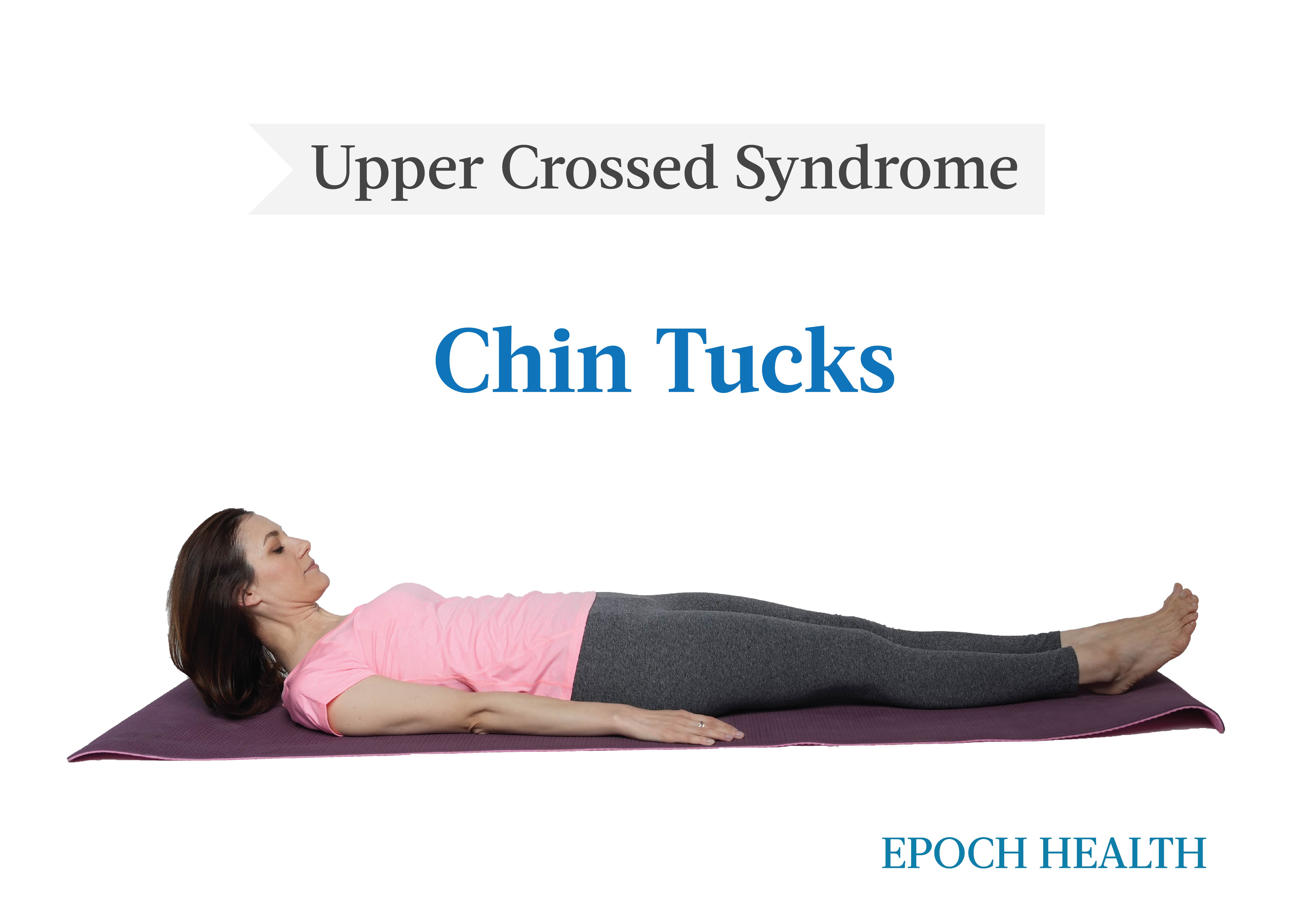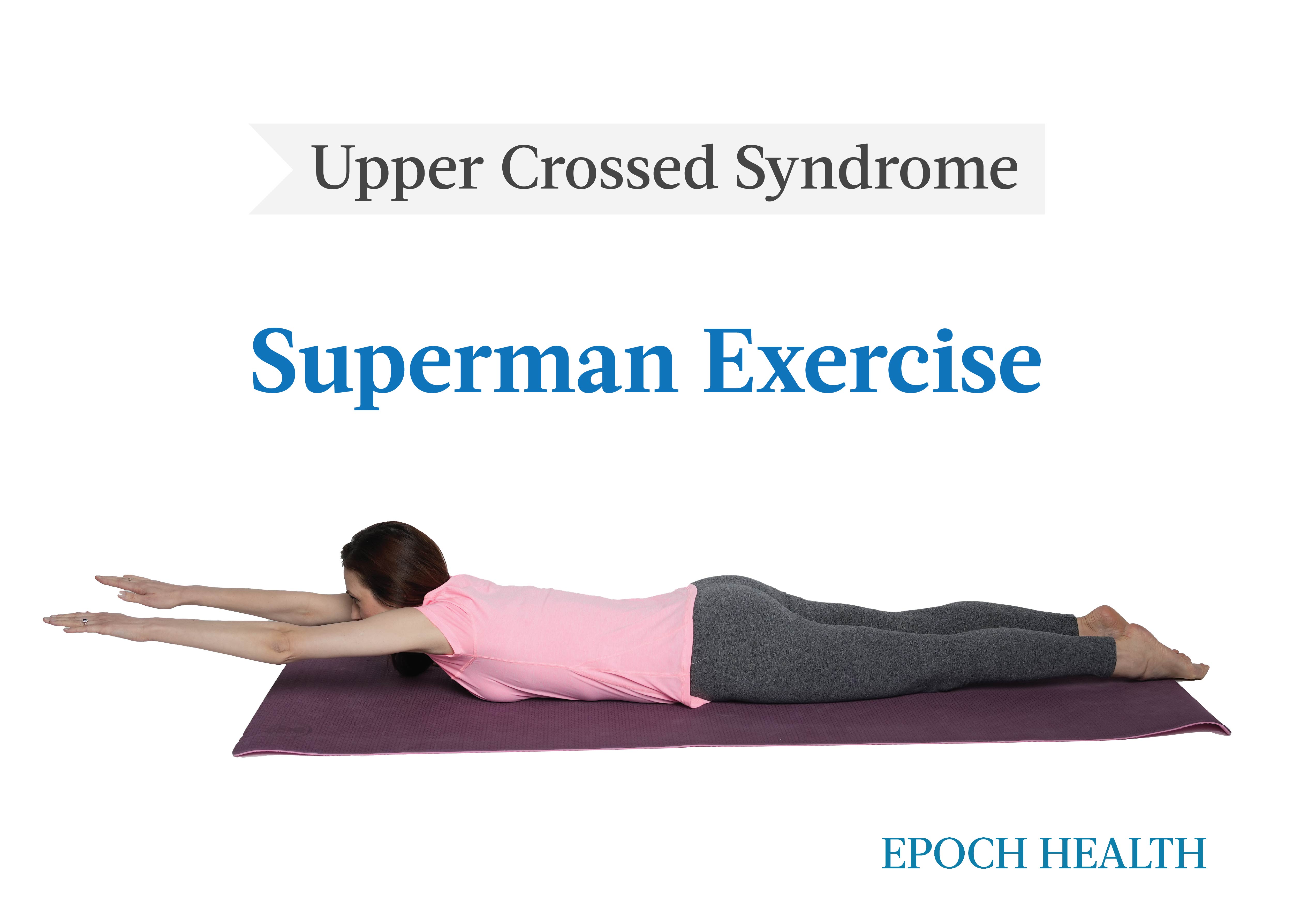

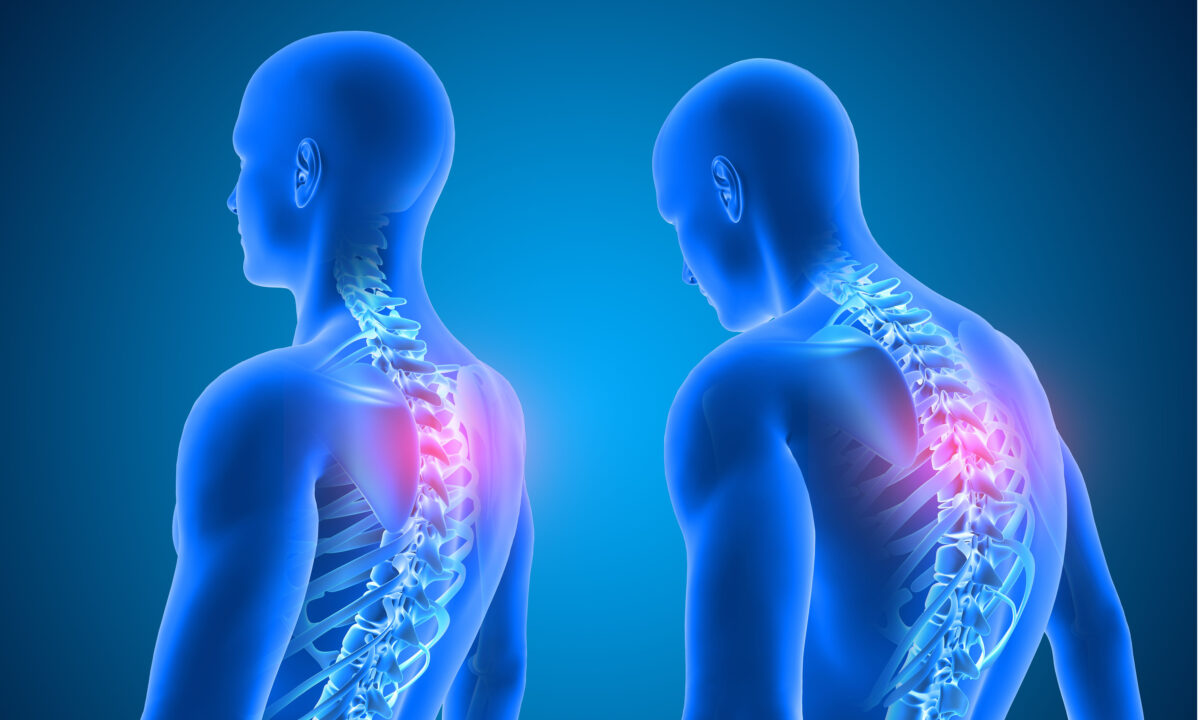
The big problem with bad posture is that it often feels so good.
Postural considerations often relate to formed habits, and even though bad posture can have negative consequences in other areas of the body—and on bodily function as a whole—bad postural habits often feel comfortable and familiar. At first, bad posture is just bad posture, but over time, certain muscles can grow tight and strong while others grow stretched and weak, upsetting the body’s natural postural balance.
One of the most commonly encountered modern-day postural problems is upper crossed syndrome. First described by Dr. Vladimir Janda (pdf), upper crossed syndrome refers to a specific pattern of weakness evidenced in the upper body that is caused by prolonged and repetitive bad posture.
Upper crossed syndrome is strongly related to head position, according to Betsy Hughes, a physical therapist in Orlando, Florida, with over 44 years of experience.
The head is relatively heavy—between eight and 12 pounds—and the body is designed to support it directly over the spine when in an upright position.
Modern-day electronics, especially computers and phones, encourage a head-forward posture that the body was not designed to support for extended periods. “Where the head goes, the shoulders will follow. It’s a one-two punch of bad postural habits,” Hughes told The Epoch Times.
Taken as a whole, the body’s processes rely on balance to work the most effectively. The muscles on the chest and shoulders must be coordinated, and so must the muscles on the front and back of the neck.
Unfortunately, as your head and shoulders move forward and down during bad sitting posture, imbalances can build. The chest muscles shorten and tighten while the upper back muscles stretch and weaken.
With our heads and shoulders forward, there is a tendency to look downward, and the natural compensation is to rotate the head upward so that it is level. This causes the muscles on the front of the neck to get weak and stretched while the muscles on the back of the neck become shortened and strong.
In the end, we are left with one plane of weak, stretched muscles and another plane of strong, shortened muscles. Overall, it’s a recipe for disaster.
Thankfully, there are specific things you can do to help correct these issues.
“Many people tend to bring their heads toward their computer screens,” Hughes states.
“It’s better to bring computer screens higher and closer while maintaining your posture. Computer screens that are at neck or face level tend to encourage a more upright posture.”
When using a cellphone, resist the urge to hold the phone low and move your head down toward it.
Instead, bring the phone up to head height. Resting your upper arms against your body helps avoid shoulder fatigue.
Purposeful work toward better posture is critical.
“Correcting bad posture is like climbing out of a hole that gets deeper over time,” she states. The longer you wait, the harder it gets. It’s much better to start earlier if you can. Being aware of posture and striving to improve it helps.
Consider having someone take pictures of you from different angles. Pictures don’t lie and they will allow an honest assessment of your posture.
Stretches are a great resource in countering upper crossed syndrome. Counterposes benefit you by decreasing muscle tightness and reducing their contribution to bad posture. These stretches are easy to do and highly effective.
Here are some stretches to loosen tight muscles:
Step 1: Touch the back of your head while sitting or standing.
Step 2: While keeping your hand in place, bring your elbow back as far as you can.
You can do one arm at a time or both arms at the same time.
This stretch focuses on the pectoralis muscles and decreases their tendency to pull the shoulders forward, which is a major contributor to upper crossed syndrome.
Step 1: Sit or stand as straight as you can while keeping your head level.
Step 2: Then slowly bring your chin toward your chest.
Pulling your head back and dropping your chin can help stretch the suboccipital, upper trapezius, and levator scapulae muscles on the back of your neck and upper shoulders, and bring them into balance with the muscles on the front.
Step 1: Bring one hand behind your back with a bent elbow.
Step 2: Reach over the top of your head with your other hand and carefully pull your head toward the side, away from the hand behind your back.
This stretch helps decrease the tightness of the large trapezius muscles and increases the flexibility of the neck and upper back.
Hold stretches for approximately two minutes and ease into them. Practice subtle movements, keeping careful tabs on what your body is telling you.
Never yank, pull, or force movements. Stretches should be done at least three times a day and it is best to schedule specific times for stretching.
Exercise can have a huge impact on normalizing posture. It is highly effective and is recommended. Strengthening exercises can help restore weak muscles to their former levels and help them resume their specific roles in maintaining posture.
Here are some exercises to strengthen weak muscles.
Step 1: Grasp an elastic exercise band, with both hands approximately 12 inches apart.
Step 2: Hold arms straight out in front of you with fully extended elbows and with your hands at chest height.
Step 3: Slowly pull your hands apart until your arms are out to your sides and the band makes contact with your chest, then ease your hands back forward until they are back where they started.
This strengthens the muscles on your upper back and has the bonus benefit of stretching the pectoral muscles. Take approximately two seconds to move in each direction and perform 12 repetitions per set; do three sets. You can make the exercise more challenging by using stronger bands, or by increasing the number of repetitions.
Step 1: Lay on your back.
Step 2: Bring your head up and try to touch your chin to your chest without moving your shoulders, then slowly lower your head back down.
Take approximately two seconds to move your head up, and then another two seconds to move your head back down. This is a great exercise to strengthen the muscles on the front of the neck. Perform 12 repetitions per set, and do three sets.
This exercise will place you in a position that looks like Superman when he is flying.
Step 1: Lay face-down on the floor with your legs together and your arms straight out ahead, together, with your elbows straight.
Step 2: Lift your head as high as you can off of the floor while also lifting your arms, keeping them straight.
This exercise strengthens your upper back muscles and also extends your spine. Try holding yourself up for three seconds before lowering back down slowly. Take two seconds to move in either direction, and perform three sets of 12 repetitions. This can be a challenging exercise to perform at first, but is very effective in restoring good posture.
In the greater picture, every one of us is different, and getting a handle on posture can be quite challenging. If you are struggling while trying to go it alone, secure the services of a chiropractor, physical therapist, or personal trainer who has specialized training in postural restoration. All of these professionals can provide individualized treatment plans that you can use at home.
The human body is an amazing, flexible set of structures that allows for a great deal of movement and functional capability. Bad posture can result in debilitating symptoms that can keep you from living life fully. Being proactive can help you regain good posture, prevent future problems, and maximize your quality of life and functional independence.

